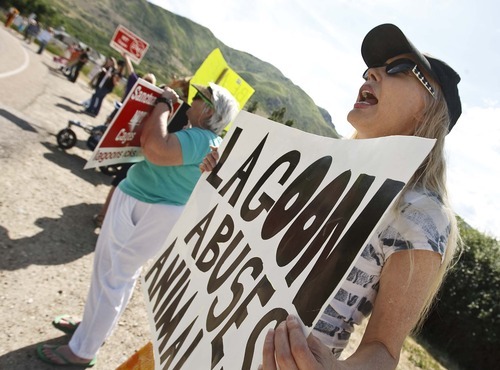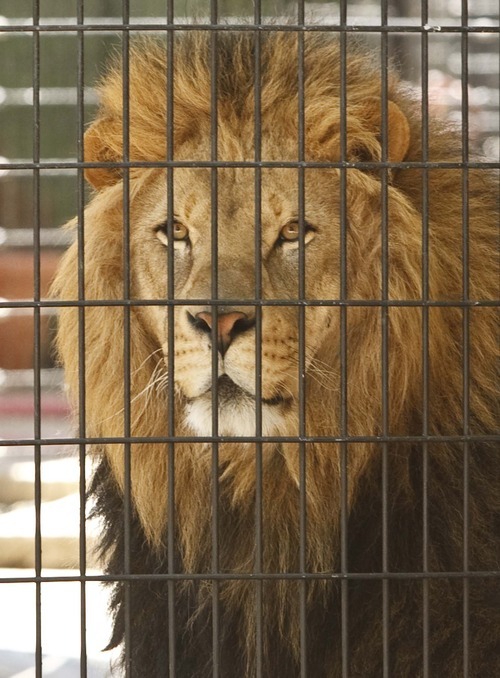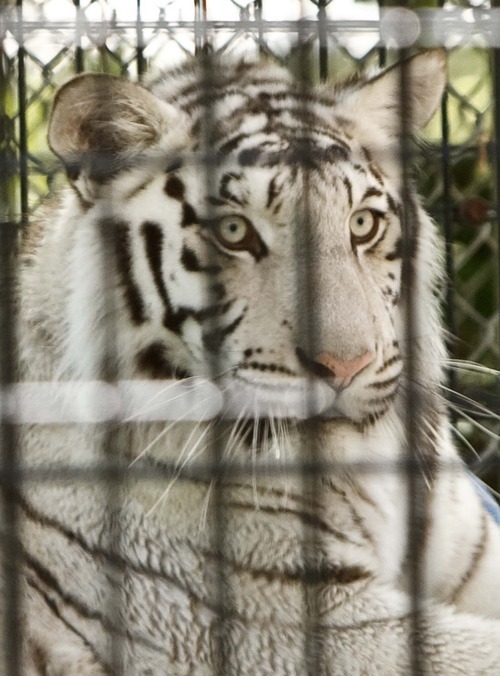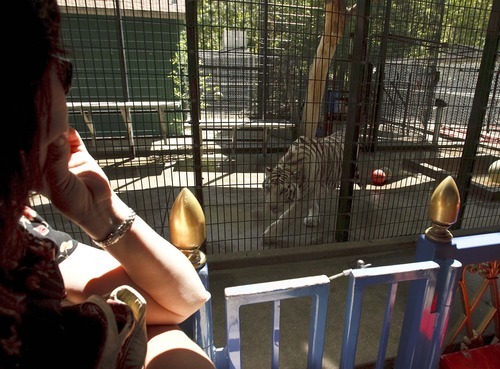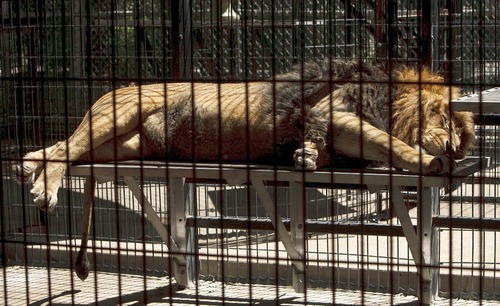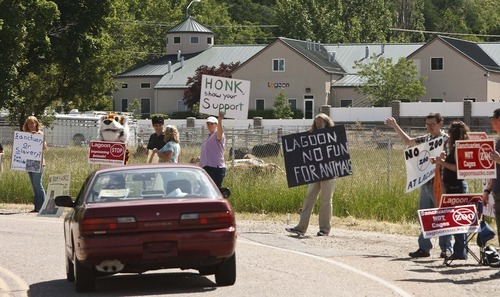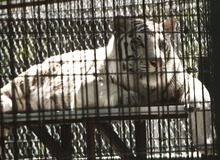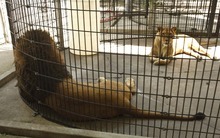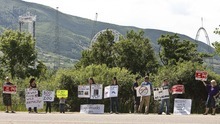This is an archived article that was published on sltrib.com in 2012, and information in the article may be outdated. It is provided only for personal research purposes and may not be reprinted.
Farmington • Amor Adam stood by the road, watching cars loaded with kids his age drive by on their way to a day of thrills at nearby Lagoon Amusement Park.
Like them, the 11-year-old from Salt Lake City was thinking of Lagoon — and one ride in particular.
"I came here today because I don't like cruelty to animals," said Adam, who joined more than 30 people protesting the animal exhibits at the popular amusement park. "They have animals stuck in small cages. They need bigger habitats, and a natural habitat is the perfect place."
The protest was arranged by the Utah Animal Rights Coalition (UARC). The group has staged several other protests this spring near Lagoon with the goal of helping the amusement park find new homes for the roughly 80 animals seen by visitors on the Wild Kingdom Train ride.
Jordan Kasteler organized the protests and created the website http://www.Lagoonsucks.com to publicize that the amusement park has been cited "numerous times" by the United States Department of Agriculture (USDA) for violations ranging from failing to provide veterinary care to sick and dying animals to filthy enclosures and not enough space for the animals.
"We are asking Lagoon to release the animals to sanctuaries, which we would help coordinate, and to replace the current animal exhibit with a non-animal exhibit," Kasteler said. "We would love for the animals to have a better environment, but Lagoon has already said they do not have room for larger enclosures. Even if they did have room, there is a lot of noise pollution from the train ride and the people, which creates a lot of stress on the animals."
Dick Andrew, executive vice president of marketing at Lagoon, said the park is in "complete compliance with the rules and regulations of the USDA" and two recent surprise inspections show the park's commitment to providing quality care for animals in the park.
"The filed report, which was one sentence long, I believe, said 'no non-compliance issues were found,' " Andrew said. "Frankly, many of the allegations [UARC] accuse us of are fiction."
Lagoon was last issued a violation notice in 2006, according to Andrew.
That report, provided by Kasteler, reprimanded the park for not providing "timely and accurate information on the health problem which led to the euthanasia of the adult female kangaroo on 7-22-06 to the kangaroo's attending veterinarian." The report goes on to say that the attending vet was still waiting for blood work and a report on the animal two months after its demise. That information was needed to help ensure adequate care for the remaining kangaroos.
Another report from September 2011, also provided by Kasteler, includes a similar complaint regarding two leopards. According to the USDA, Lagoon failed to perform quarterly testing for parasites after the animals were treated to make sure the issue had been resolved.
Andrew said the park has three veterinarians on staff: a general practitioner, another specializing in hoofed animals and one focusing on cats.
"We have a staff of six people who deal with the animals, and there are four of them in the park every day, 365 days a year," Andrew said.
Lynn Anderson, a candidate for the Utah House of Representatives in District 19, was among those protesting on Saturday morning.
She acknowledged the joy the amusement park has brought to generations of Utahns and the valuable role it plays in Davis County but noted that many other successful parks around the country do not have animal exhibits.
She also offered to help find new homes for the animals at Lagoon.
"As a concerned member of our community I call upon Lagoon to begin a transparent process of ending their exhibit and retiring the animals to accredited sanctuaries," Anderson said in a prepared statement. "I would welcome an opportunity to assist, in any way possible, in achieving this."
With the exception of an eagle hit by a truck that is unable to fly, none of the animals seen during the Wild Kingdom Ride came from the wild.
"The animals, with very few exceptions, have come from failed sanctuaries and parks," Andrew said. "In essence, they are basically rescue animals."
The protesters acknowledged that the animals may have been born in captivity but still believe they should not be caged.
"As long as Lagoon has these animals they are supporting exotic dealers and keeping them in confinement," said Virginia Fort, senior campaigner for People for the Ethical Treatment of Animals. "Even if they have never been in the wild they still have a natural instinct to get there." —
See Lagoon's wild animals
O This video follows the park's train as it winds through the animal park >


